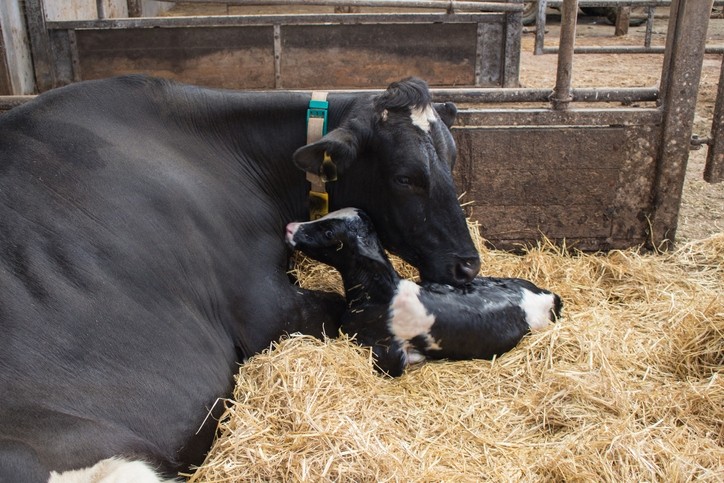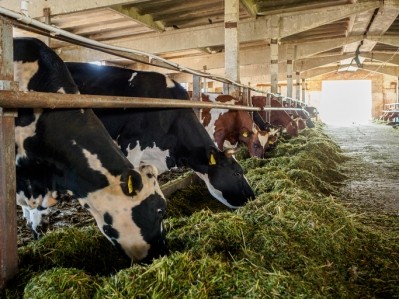Benefits of calcium for reproductive outcomes in dairy cows

The research was supported by Phibro Animal Health and by USDA NIFA.
The team involved said achieving an appropriate calcium balance in dairy cows is critical near calving, and not only to ensure a healthy transition to lactation; calcium added to acidified prepartum diets can lower rates of uterine infection and enable a speedier return to ovulation, they argued.
"We know that calcium metabolism in dairy cows is very important. There's research saying that 50% of multiparous cows, those on their second or third pregnancy, suffer some sort of deficiency of calcium," said Phil Cardoso, associate professor in the Department of Animal Sciences at Illinois.
US producers commonly feed negative dietary cation-anion difference diet (DCAD) diets in the weeks before calving, usually supplemented with a small amount of calcium (1% of dry matter), he noted. The practice is typically enough to avoid full-blown milk fever, or clinical symptoms of calcium deficiency but there has been little guidance on how much to acidify the diet to remobilize the optimal amount of calcium and avoid excretion in the urine, he said.
There has been no testing of the effects of adding different concentrations of dietary calcium to the fully-acidified DCAD diet, added Cardoso.
Research goals
"Calcium is important for many cellular processes. Without adequate calcium concentrations, tissues don't work optimally and are subject to inflammation and susceptible to disease.
“We wanted to test whether an increased amount of calcium - 2% of DM - added to an acidified diet during the last month of pregnancy could prevent those issues and lead to more favorable reproductive outcomes,” reported the professor.
Methodology
His team fed 76 multiparous Holstein cows one of three diets in the month before calving: a control, non-acidified DCAD diet with no added calcium; an acidified DCAD diet (-24 milliequivalents per 100 grams of dry matter) with no added calcium; and an acidified DCAD diet (-24 milliequivalents) with added calcium at 2% of dietary dry matter. The DCAD formulation was mixed with typical forages and corn silage in prepartum diets.
After calving, all cows were switched to a typical postpartum diet with 1% of dietary dry-matter calcium, explained the team.
The researchers then monitored changes in the blood, uterus, ovaries, and pregnancy status at two weeks and at four weeks post-calving.
Findings
"There was a tendency for cows fed the negative DCAD + calcium diet to get pregnant at a higher rate than cows fed the control diet, but we need to test that in a larger population to be sure of that result," said Cardoso.
What the team did see was that cows fed the diet with added calcium took less time to ovulate and had lower levels of uterine infection than cows on the other diets.
They said that outcome was likely due to the fact that cows on the calcium-added diet had more tight junction proteins in the uterine lining; these proteins bind adjacent cells, preventing a ‘leaky’ tissue that could allow pathogens to enter the bloodstream during calving.
"Ours is the first study showing tight junction proteins even exist in the uterus of the dairy cow, and also clearly indicates that added calcium improves their number and function," said Cardoso.
Cows fed the calcium-added diet also had more favorable disease-fighting antioxidants in the blood and more glands in the uterine lining, which keep the organ clean and produce hormones that can kick-start ovulation, said the researchers.
"That could be why we saw better pregnancy rates," Cardoso added.
He points out that many US producers have been using a negative DCAD strategy for decades, but aren't acidifying the diet enough, taking it to only -5 milliequivalents and not adding calcium, or adding it at only 1% of dietary dry matter.
"We are saying that you need to go to -20 milliequivalents and up to 2% of dietary dry matter for calcium.”
The team concluded that a negative DCAD diet with added calcium is helpful not only to get through the transition to lactation but to help improve future pregnancy outcomes in the herd.
Source: Theriogenology
DOI: 10.1016/j.theriogenology.2019.10.014
Title: Increased dietary calcium inclusion in fully acidified prepartum diets improved postpartum uterine health and fertility when fed to Holstein cows
Authors: KT Ryan, AR Guadagnin, KM Glosson, SS Bascom, AD Rowson, AJ Steelman, FC Cardoso













